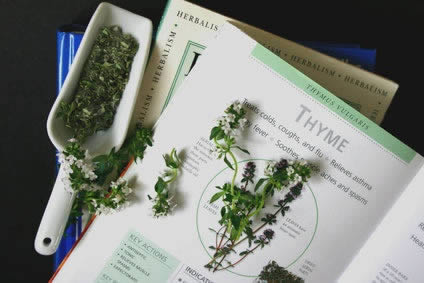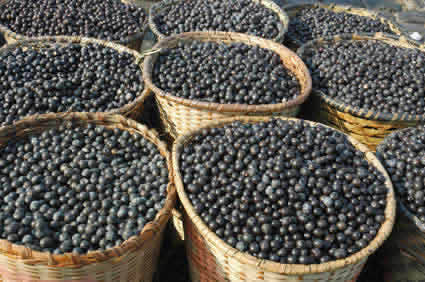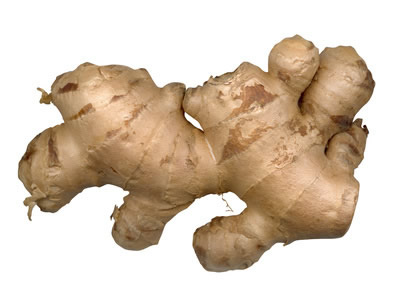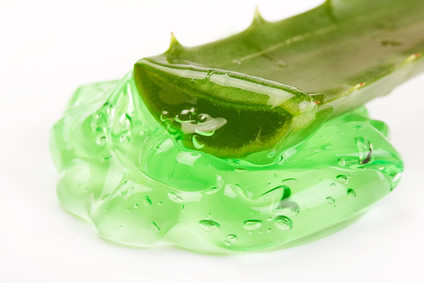Pygeum (pygeum africanum ), is an evergreen tree native to higher elevations of southern Africa.The bark of this African evergreen has been used for centuries throughout its as a herbal remedy for prostate and urinary tract maintenance. Current researches show that Pygeum africanum can significantly decrease urinary frequency and pain with urination in men who suffer from mild-to-moderate benign prostatic hypertrophy (BPH) symptoms. Pygeum, has been approved in France, Italy, and Germany as a remedy for BPH.
Pygeum Benefits
In vitro and in vivo studies demonstrate that pygeum africanum extracts antagonize androgen receptor, and have antiproliferative and apoptotic activities against prostate cancer cells. Although the mechanism of action of pygeum africanum extract is unknown, various synergistic mechanisms have been proposed. Pygeum bark contains various useful compounds, including phytosterols such as beta-sitosterols, which exhibit anti-inflammatory activity by inhibiting the production of prostaglandins in the prostate. In vitro studies demonstrate pygeum africanum extract is a strong inhibitor of rat prostatic fibroblast proliferation stimulated by various growth factors. A study reported in the “Journal of Cellular and Molecular Medicine” found that, pygeum africanum, inhibits the ligand-activated human androgen receptor, which controls the growth of the prostate gland. Researchers found that a compound in pygeum africanum, (N-bütilbenzen-sülfonamid), also inhibits the androgen receptor, as well as the progesterone receptor. Especially, NBBS (N-butylbenzenesulfonamide) was found to have anti hormonal activity as well as the ability to inhibit the growth of prostate cancer cells.
Pygeum and Prostate Problems
 In a study in Europe, 85 men with mild to moderate BPH were given 50 milligrams of pygeum twice daily for 2 months. The study participants showed a 40% reduction in the International Prostate Symptom Score (IPSS), a subjective assessment of the severity of symptoms of BPH. Also, men reported a 32% reduction in frequency of nocturnal urination and a 31% improvement in quality of life. In a placebo-controlled, double-blind study, 263 men received either 100 milligrams of Pygeum africanum or placebo daily for sixty days. The pygeum group showed a 17 % improvement in urinary flow, a 24 % reduction in residual bladder volume, a 31% reduction in nocturia, and a 19 % reduction in daytime urinary frequency.
In a study in Europe, 85 men with mild to moderate BPH were given 50 milligrams of pygeum twice daily for 2 months. The study participants showed a 40% reduction in the International Prostate Symptom Score (IPSS), a subjective assessment of the severity of symptoms of BPH. Also, men reported a 32% reduction in frequency of nocturnal urination and a 31% improvement in quality of life. In a placebo-controlled, double-blind study, 263 men received either 100 milligrams of Pygeum africanum or placebo daily for sixty days. The pygeum group showed a 17 % improvement in urinary flow, a 24 % reduction in residual bladder volume, a 31% reduction in nocturia, and a 19 % reduction in daytime urinary frequency.
The effectiveness of a combination of pygeum extract and nettle the therapy of BPH was examined by a group of scientists from Poland. The scientists recruited 134 participant with symptoms of BPH and they were all between the ages of 53 and 84 years. These patients were divided in 2 groups with one group receiving 2 capsules of combined 25 mg of pygeum bark extract and 300 mg nettle extract daily. The other group was also given 2 capsules of the same combined extract however containing 150 mg nettle extract and 13 mg of pygeum extract. The result of the study demonstrated important improvement in all patients of the 2 groups after 28 days of therapy. This study was reported in the journal, “Clinical Therapeutic”. A new literature review analyzed trials from 1966-2000 containing a total of 18 randomized, controlled studies involving 1562 men. The authors concluded that, compared with placebo, pygeum provided a important improvement in the combined outcome of urological symptoms and flow measures. Also, participants taking P. africanum extract were more than twice as likely to report an improvement in overall symptoms; nocturia was reduced by 19 % and residual urine volume by 24%; and peak urine flow was increased by 23 %.
In a preliminary study, men with BPH or chronic prostatitis were given 200 milligrams per day of pygeum africanum extract for 60 days, resulting in some improvement of symptoms and lab analysis of the prostate and urinary tract. The extract used in this trial was standardised to contain 14% beta-sitosterol and 0.5% n-docosanol. Pygeum extract (100 mg/d for 5-7 weeks) was used to treat 47 people with chronic prostatitis in a open-label study. 89% of participants experienced complete remission of symptoms.
Pygeum africanum improves the production of sperm, as well as the sperm’s quality. The herb may be an efficacious treatment for male infertility, particularly in cases of diminished prostatic secretions. P. africanum extracts have been shown to enhance alkaline phosphatase (an significant enzyme that maintains the proper pH of the seminal fluid) activity, which helps maintain the appropriate pH of seminal fluid, and enhances total prostatic secretions. The lack of IgA in the semen is a important indicator of clinical success. In one trial, the participants who had no IgA in their semen showed an alkaline phosphatase boost from 265 to 485 IU/cc.
Dosage
Pygeum extract is generally administered at a dose (standardized to contain 14% triterpenes including beta-sitosterol and 0.5% n-docosanol) of 50-100 mg twice daily. Pygeum bark extract is marketed under the brand-names of Tadenan in France and Pigenil in Italy. It has been examined in clinical studies for BPH at daily doses of 25 to 200 milligrams. P. africanum extract effectiveness might be enhanced when it is combined with stinging nettle.
Side Effects
Pygeum africanum is usually well tolerated at this dosage. Adverse effects, which have been reported by a small portion of patients, include mild gastrointestinal problems. One study reported satisfactory safety profiles after twelve months of using 100 milligrams daily in 174 participant. Prostate problems are mostly benign, but if you have symptoms of benign prostatic hypertrophy get a prostate specific antigen (PSA) test and examination by a physician to rule out other (such as prostate cancer) complications.
 Thyme oil can help maintain a healthful scalp, curing dandruff and promoting healthful hair growth. There is some findings that applying lavender oil in combination with the essential oils from thyme, cedarwood and rosemary to the scalp improves hair growth in up to 44 percent of people after seven months of therapy.
Thyme oil can help maintain a healthful scalp, curing dandruff and promoting healthful hair growth. There is some findings that applying lavender oil in combination with the essential oils from thyme, cedarwood and rosemary to the scalp improves hair growth in up to 44 percent of people after seven months of therapy. Acai berry contains compounds called anthocyanins and flavonoids. Flavonoids and anthocyanins are strong antioxidants that help defend the body against life’s stressors. Antioxidants protect against free radicals, highly reactive atoms and molecules that can damage DNA and other important molecules in the cell. Free radicals are the result of some oxygen molecules that are converted into oxidizing substances during the process that creates energy in cells, cellular respiration. Oxygen is a very active element, and in the stage of exchanging the molecules in the bloodstream, oxygen combines with many different compounds. Some of these compounds can cause damage to body tissue. Oxidative stress has been implicated in the development of a number of conditions including arthritic disorders, cancer, and cardiovascular problems.
Acai berry contains compounds called anthocyanins and flavonoids. Flavonoids and anthocyanins are strong antioxidants that help defend the body against life’s stressors. Antioxidants protect against free radicals, highly reactive atoms and molecules that can damage DNA and other important molecules in the cell. Free radicals are the result of some oxygen molecules that are converted into oxidizing substances during the process that creates energy in cells, cellular respiration. Oxygen is a very active element, and in the stage of exchanging the molecules in the bloodstream, oxygen combines with many different compounds. Some of these compounds can cause damage to body tissue. Oxidative stress has been implicated in the development of a number of conditions including arthritic disorders, cancer, and cardiovascular problems.  2000, the authors examined 6 study in which ginger was used to treat these problems. Researchers concluded that ginger root was more effective than a placebo in all cases and equally efficacious as anti-nausea medications in some situations. The antiemetic action of ginger root is attributed to its constituents,
2000, the authors examined 6 study in which ginger was used to treat these problems. Researchers concluded that ginger root was more effective than a placebo in all cases and equally efficacious as anti-nausea medications in some situations. The antiemetic action of ginger root is attributed to its constituents, gastrointestinal tract. Studies have shown that aloe gel might be helpful in treating psoriasis, dandruff, seborrhea, and minor burns and skin abrasions, as well as radiation-induced skin injuries. The gel acquired from the leaf is useful for treating different skin diseases such as dermatitis, burns and other skin disorders.
gastrointestinal tract. Studies have shown that aloe gel might be helpful in treating psoriasis, dandruff, seborrhea, and minor burns and skin abrasions, as well as radiation-induced skin injuries. The gel acquired from the leaf is useful for treating different skin diseases such as dermatitis, burns and other skin disorders.